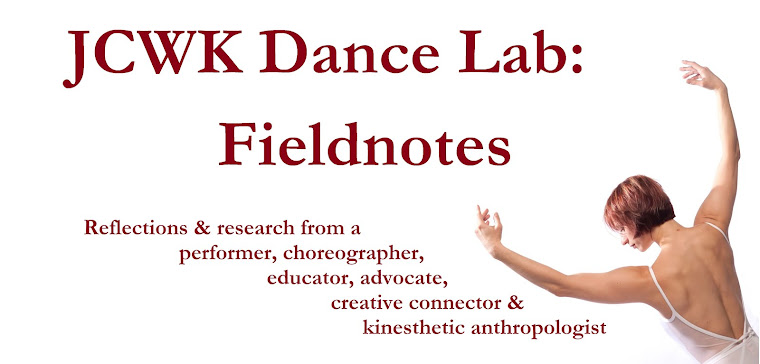Saturday, November 27, 2010
Updates and looking back
Thursday, November 25, 2010
Re-staging "In a Small Space"
Sunday, November 21, 2010
after "after the fall"
falling leaves...
after the fall: Steps in the Process... Inspiration, visualization, and movement


Monday, November 15, 2010
Trenches - phase 1 of after the fall
I'm terrible at saying good bye...
after the fall... entry 1
Wednesday, November 10, 2010
West Chester University Dance Concert Press Release
West Chester University Dance Company
Presents
Reception/ Perception
Madeleine Wing Adler Theatre
Swope Music Building and The Performing Arts Center
817 South High Street
West Chester, PA
Friday, November 19th, 8pm
Saturday, November 20th, 2pm & 8pm
Reservations:
Department of Theatre & Dance Box Office (610) 436-2533
Tickets:
$15 Gen Adm, $12 Std w/ID & Srs
West Chester, PA-West Chester University Dance Company, in cooperation with The College of Visual and Performing Arts and the Department of Theatre and Dance, is proud to present Reception/Perception, the annual fall faculty and guest artist dance concert. Faculty works by Gretchen Studlien-Webb, Liz Staruch, and adjunct faculty Lisa Lovelace will be presented, in addition to guest artists’ works by Megan Bridge and Jessica Warchal-King of Philadelphia. Three select student pieces will also be showcased.
Studlien-Webb, the director of the West Chester University Dance Company, will present two works. The first is a premiere, as yet untitled, that represents a look into the inner self with each dancer developing their own character though dynamic quality shifts and individual movement invention. Dance Into The Light, v.3 is a reconstruction of an energetic dance in which the interplay with lighting is fundamental and strategically imperative. Lighting for this concert is by Philadelphia-based designer Mark O’Maley.
West Chester faculty member Liz Staruch will present the start of a year-long project incorporating film and dance performance entitled The Camera Betrays You. The project, funded in part by a grant from the West Chester University Provost’s Office, is an artistic collaboration between Staruch, three professional dancers from Philadelphia and New York City, photographer Victoria Zolnoski from Johnson State College in Vermont, and O’Maley. Raw footage from the first site specific shoot at the High Line in New York City will be presented during this concert.
Interruption is the new piece from adjunct faculty Lisa Lovelace. This dance is a playful look at how we try to be hospitable to the constant interruption of our lives. Using cell phones, the dancers receive calls, text friends, and have conversations. As an independent choreographer, Lovelace has performed throughout Philadelphia and surrounding counties. She has also been a recent guest artist at Eastern University and St. Josephs’ University.
Megan Bridge is a dancer and dance maker based in Philadelphia. She currently co-directs
Jessica C. Warchal-King, a member of the Nora Gibson Performance Project and apprentice with Kun-Yang Lin/Dancers in Philadelphia, will present after the fall. The work questions the way we compartmentalize the human experience and delves into ways that our bodies provide our narrative. Warchal-King recently received her MFA in Dance from Temple University. The work includes original composition by Christopher Farrell.
The student pieces by Angela Frezzo, Lauren Quattrone, and Dominic Caton and Alisa Silverman set on fellow WCU dance students were selected through an audition process.
